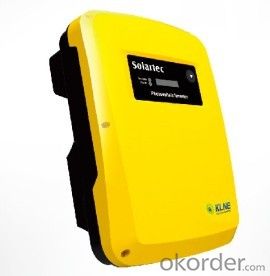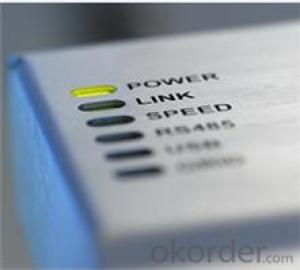Powland 3000w Solartec 3600 On Grid Inverter with WiFi
- Loading Port:
- Shanghai
- Payment Terms:
- TT OR LC
- Min Order Qty:
- -
- Supply Capability:
- 10000 set/month
OKorder Service Pledge
Quality Product, Order Online Tracking, Timely Delivery
OKorder Financial Service
Credit Rating, Credit Services, Credit Purchasing
You Might Also Like
Solartec 1500,2000,2500,3000,3600,4000,4600,5000
1MPPT, single phase
IP 65
New mold with Pure thick aluminum crust.
Efficient
■ Efficiency of up to 97.6 %
■ TransformerlessSafe
■ Integrated DC switch
■ Comprehensive protection functionsFlexible
■ LCD backlight
■ For indoor and outdoor installationSimple
■ ‘Plug and play’connection for easy installation
■ Friendly interface, easy to install and maintain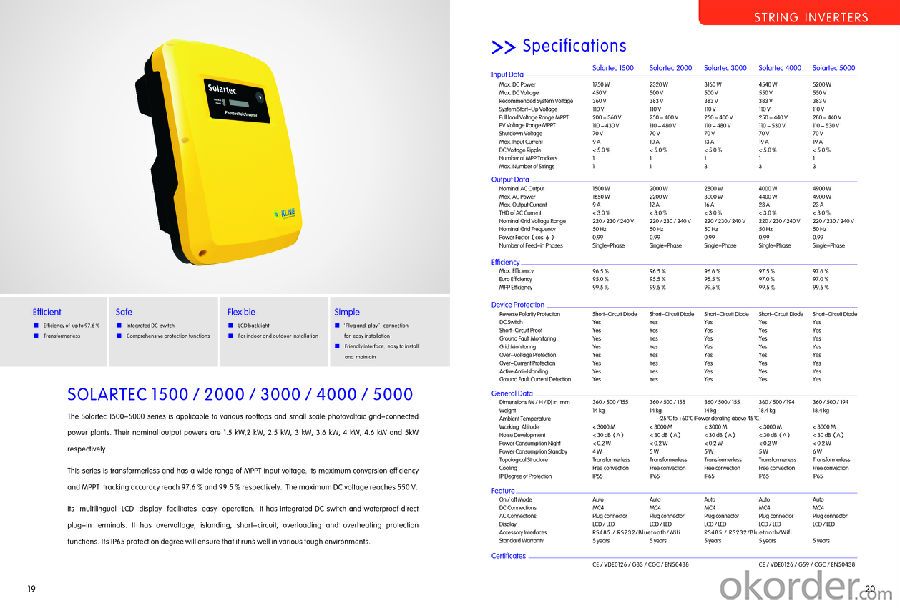
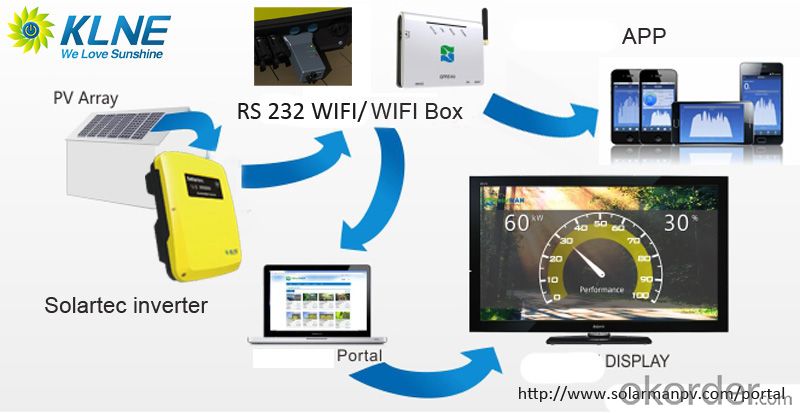
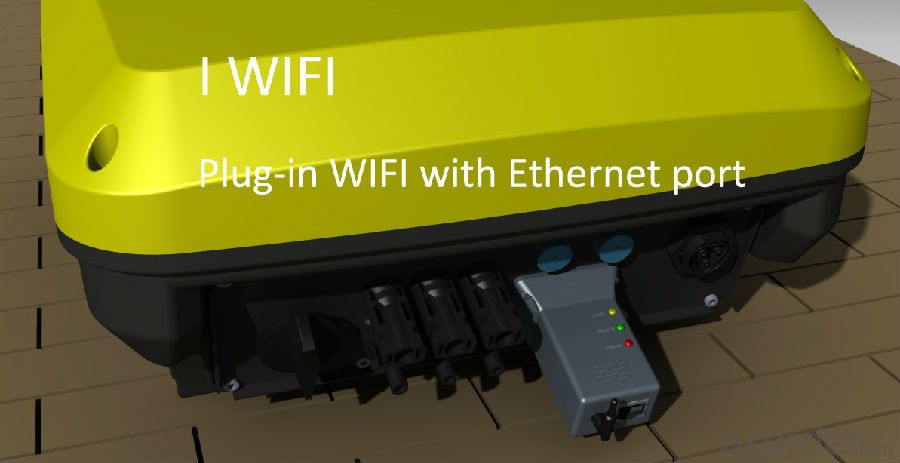
- Q: Can a solar inverter be used with a remote monitoring system?
- Yes, a solar inverter can be used with a remote monitoring system. In fact, many modern solar inverters are designed to be compatible with remote monitoring systems. This allows users to monitor the performance and output of their solar system from a remote location, providing real-time data on energy production, system efficiency, and any potential issues or faults. Remote monitoring systems provide convenience, enable proactive maintenance, and help optimize the overall performance of solar installations.
- Q: Can a solar inverter be used with different types of solar charge controllers?
- Yes, a solar inverter can be used with different types of solar charge controllers as long as they are compatible with each other. However, it is important to ensure that the voltage and current ratings of the inverter and charge controller are compatible to avoid any damage to the system.
- Q: How does a solar inverter handle voltage and frequency variations caused by voltage sags and swells?
- Voltage and frequency variations caused by voltage sags and swells are effectively managed by the diverse mechanisms equipped in a solar inverter. When there is a voltage sag or swell in the electrical grid, the solar inverter employs a technique known as Maximum Power Point Tracking (MPPT) to regulate the power output from the solar panels. During a voltage sag, where the grid voltage drops below the standard level, the solar inverter adjusts its MPPT algorithms to ensure that the solar panels continue operating at their maximum power point. This guarantees that the inverter extracts the most available power from the panels and compensates for the reduced grid voltage. By dynamically adjusting the operating point of the panels, the inverter mitigates the effects of the voltage sag and maintains an optimal power output. Similarly, in the case of a voltage swell, where the grid voltage exceeds the normal level, the solar inverter once again utilizes its MPPT capabilities to regulate power output. It adjusts the panels' operating point to prevent them from surpassing their rated voltage, thereby safeguarding them from potential damage. This allows the inverter to effectively handle the increased grid voltage and prevent any negative impact on the solar panels. Aside from voltage regulation, a solar inverter also addresses frequency variations caused by voltage sags and swells. It is designed to synchronize with the grid frequency and uphold a stable output frequency. When the grid frequency deviates from the normal range, the inverter adapts its internal control systems to match the grid frequency. This synchronization ensures that the power output from the inverter aligns with the grid requirements, facilitating seamless integration of solar energy into the electrical system. In conclusion, a solar inverter effectively manages voltage and frequency variations caused by voltage sags and swells by utilizing MPPT algorithms, voltage regulation mechanisms, and frequency synchronization capabilities. These features enable the inverter to adapt to changing grid conditions, maximize power extraction from the solar panels, and maintain a stable and reliable power output.
- Q: What is the PV inverter starting voltage
- Inverter is a kind of semiconductor device composed of power adjustment device, mainly used for DC power into AC power. Generally consists of boost circuit and inverter bridge circuit. The boost circuit boosts the DC voltage of the solar cell to the DC voltage required for the inverter output control. The inverter bridge circuit converts the boosted DC voltage to the AC voltage of the common frequency. The inverter is mainly composed of a switching element such as a transistor, and turns the DC input into an AC output by repeatedly turning ON-OFF the switching element in a regular manner. Of course, it is not practical to simply output the inverter output waveforms from the on and off circuits
- Q: What are the different output waveforms of a solar inverter?
- The different output waveforms of a solar inverter include sine wave, modified sine wave, and square wave.
- Q: Can a solar inverter be used in systems with different module orientations?
- Yes, a solar inverter can be used in systems with different module orientations. Solar inverters are designed to convert the DC power generated by solar panels into AC power that can be used by household appliances or fed back into the grid. They can accommodate various module orientations, including different tilt angles or orientations such as landscape or portrait. However, it is important to note that the overall efficiency of the solar system may be affected by the module orientations and their alignment with the sun.
- Q: Can a solar inverter provide power during a blackout?
- No, a solar inverter cannot provide power during a blackout.
- Q: Can a solar inverter be used with different solar panel brands?
- Yes, a solar inverter can be used with different solar panel brands as long as they are compatible in terms of voltage, current, and power ratings. The inverter should support the specific voltage and power requirements of the solar panels for optimal performance and efficiency.
- Q: How does a solar inverter handle electromagnetic interference?
- A solar inverter handles electromagnetic interference by utilizing filters and shielding techniques to minimize the impact of external electromagnetic disturbances. These measures help ensure that the inverter operates efficiently and reliably, without any significant disruption caused by electromagnetic interference.
- Q: Can a solar inverter be used with solar-powered irrigation systems?
- Yes, a solar inverter can be used with solar-powered irrigation systems. A solar inverter is used to convert the direct current (DC) electricity produced by solar panels into alternating current (AC) electricity that can be used to power various devices, including irrigation systems. By using a solar inverter, the solar energy generated by the panels can be efficiently utilized to power the irrigation system, making it a sustainable and environmentally friendly solution.
Send your message to us
Powland 3000w Solartec 3600 On Grid Inverter with WiFi
- Loading Port:
- Shanghai
- Payment Terms:
- TT OR LC
- Min Order Qty:
- -
- Supply Capability:
- 10000 set/month
OKorder Service Pledge
Quality Product, Order Online Tracking, Timely Delivery
OKorder Financial Service
Credit Rating, Credit Services, Credit Purchasing
Similar products
Hot products
Hot Searches
Related keywords


